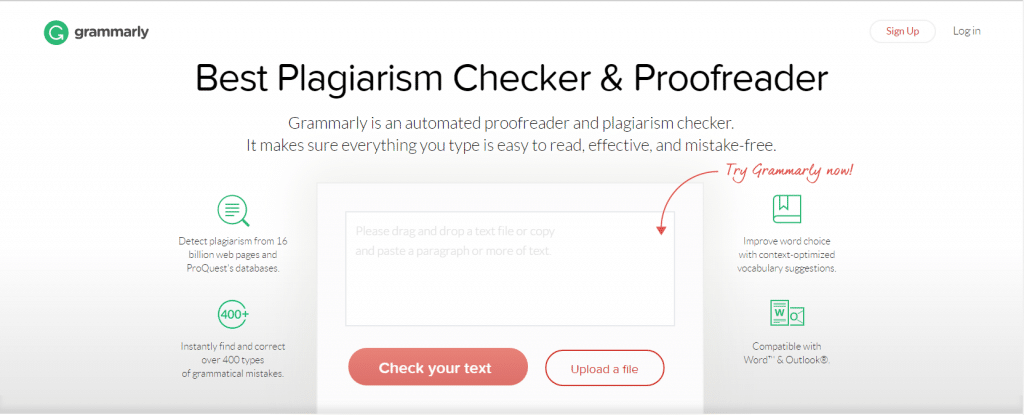We live in a world where almost every web development task can be accomplished with the help of online tools.
There are pre-made themes that help get the barebones ready, form builders to enable user interactions, plugins for extra functionality, and more.
If your goal is to get a simple website up and running, you can say that it’s only a matter of putting together the right components. However, designing a website that’s built for conversions is an entirely different story.
How to Build a Profitable Web Site
In this post, we will cover some of the most crucial information that you need to build a profitable site. In summary:
- Conduct Keyword Research
- Develop Keyword-Oriented Content
- Utilize Visual Content
- Integrate Social Media
- Optimize Your Website’s Performance
- Improve Your Security
- Build Conversion-Oriented Landing Pages
Let’s begin.
1. Conduct Keyword Research
In online marketing, keyword research is paramount.
Regardless of the type of website you’re building, your strategy must be backed with a batch of well-targeted keywords. Doing so is essential if you want your content to attract and engage the right audience.
Digital marketing strategies such as SEO, PPC, and social media marketing also depend on keyword research for maximum returns. Otherwise, you might end up wasting thousands of dollars on campaigns that do get traffic but have negligible impact on your bottom line.
To conduct keyword research, you can start with a tool like the AdWords Keyword Planner. It works by generating hundreds of potential keyword ideas based on a search term, phrase, or URL that’s relevant in your niche.
For example, if you’re in the event planning business, you can initiate your keyword research with the term “event planning.”

Keyword Planner will then proceed to list down all the relevant keywords that you can use. Important metrics, such as each keyword’s average monthly searches, competitiveness, and average cost per click.
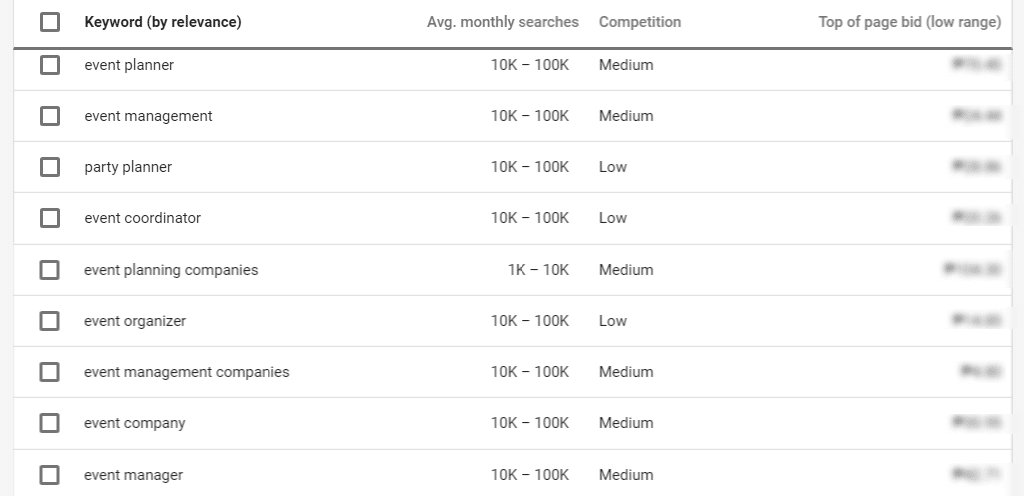
To help you spot lucrative keyword opportunities, here are some of the best tips you need to remember:
- In order to maximize your ROI, stick to keywords within the low-medium competition range.
- Use “Filters” to find keywords with commercial terms, such as “services,” “for sale,” and “hire.”
- Look for keywords that contain 3 or more terms, also known as long-tail keywords, to target a narrower audience.
When doing keyword research for the social channels, you can use tools like Keyhole.co or ahrefs or Neil Patel’s new and free, UberSuggest. The platform allows you to track the performance of keywords, hashtags, mentions, accounts, and even URLs.
Here’s a glimpse of how the platform looks from the inside:
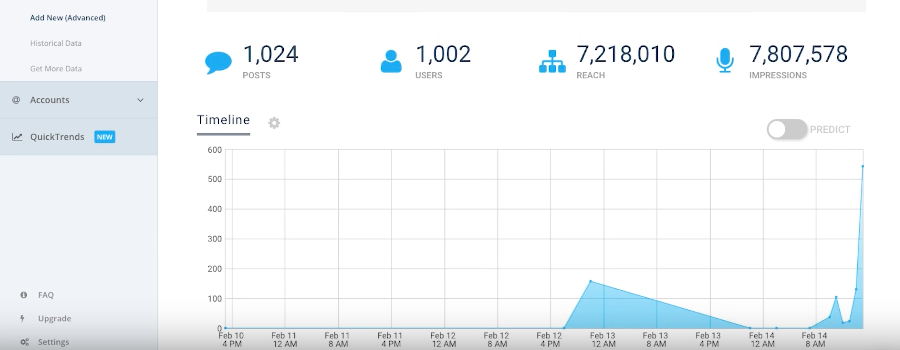


(Image sources from Keyhole.co)
These are just some of the many pertinent data points you can view about the keywords, hashtags, and mentions (among other things).
With this amount of data, you can pretty much size up the value you can get from targeting certain keywords in the social media space.
2. Develop Keyword-Oriented Content
Keep in mind that quality content is the building block of a trustworthy online brand. Before you can convince your would-be visitors to convert, you must first establish your authority and credibility as an information source in your niche.
This can be done by publishing content that provides readers with information that’s well-written, actionable, and valuable. Apart from these qualities, your content must also be optimized for specific keywords that your target visitors are more likely to use.
A rule of thumb is to make sure your focus keywords are mentioned at least once in the following content elements:
- Post Title
- URL Slug
- Main Headline
- Header Tags
- Main Body
- Image Filename and Alt Text
- Meta Description
Below is an infographic that outlines on-page SEO techniques and best practices when developing keyword-oriented content for your website:

(Image Source: Backlinko)
If you came up with a lot of long-tail keywords, you may notice that plenty of them don’t have as many monthly searches as broad terms. To compensate, feel free to target multiple keywords in one post — just be sure they fit the topic naturally and won’t disrupt the reading experience of your audience.
3. Utilize Visual Content
When it comes to audience engagement, written words can only get you so far. You also need to invest in visual content that will help capture the attention of your target audience, make data-driven points more digestible, and improve the shareability of your posts on social media.
Nowadays, a large number of brands simply use generic stock photos as featured images and call it a day. But if you really want your content to stand out, you need to put some effort into producing original visual assets for your website.
Other than real photographs of your company, you can also use a tool like Canva to quickly design custom images, such as infographics, blog post titles, social media posts, and presentation slides.

In addition to the hundreds of ready-to-use templates, Canva also features a drag-and-drop interface that makes image creation almost second nature even to non-designers. Upon selecting the dimensions you want to use, you just need to piece together the right background, text, shapes, and other elements from the unified toolbar on the left side of the screen.

4. Integrate Social Media
Visual content and social media go together like peanut butter and jelly.
According to statistics, infographics are shared and liked 3 times more on social media than other content types. Facebook posts with images, on the other hand, garner 2.3 times more engagement.
To effectively leverage social media networks as content distribution channels, a prerequisite is to create a business account and participate in the community as any other user would. You can join groups, curate content from other publishers, leave comments, follow other users, and so on.
This, in turn, will allow you to win your target audience’s trust — making more likely to follow or connect with your brand as well as click on the posts you share.
You can then grow your email list with a tool such as OptinMonster, which I use on JUST Creative.
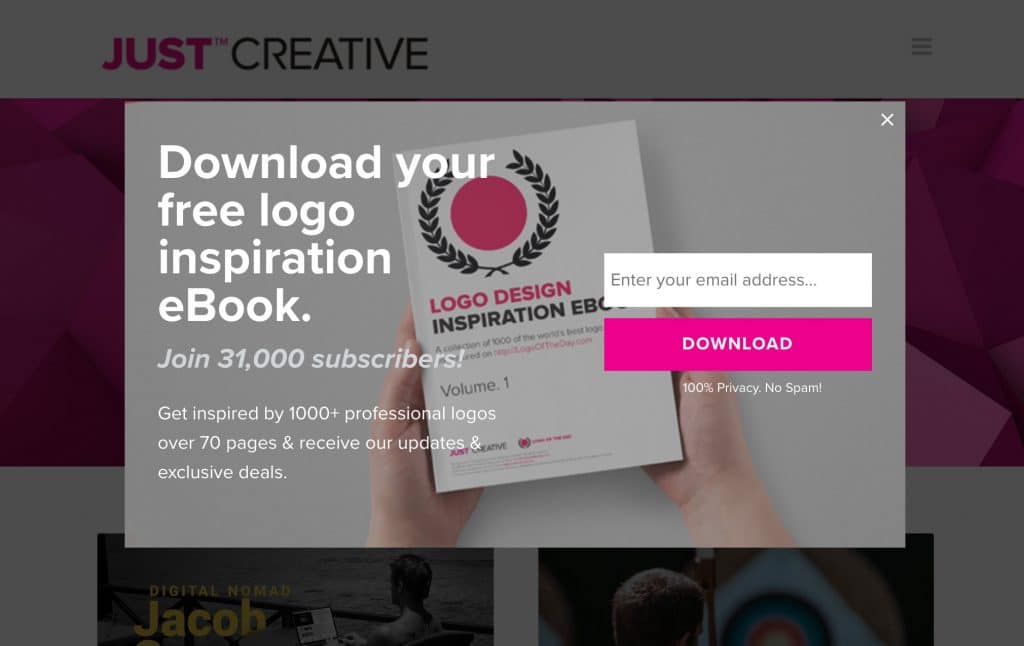
The next step is to integrate social sharing buttons on various shareable elements on your website, like images, blog posts, and even “tweetable” quotes.
If you’re using a content management system or blog publishing platform, chances are your theme already has built-in social sharing buttons. You simply need to activate them by enabling an option in your theme editor or settings page.
Alternatively, you can use third-party tools like Sumo to integrate social sharing functionalities on your website.
One of Sumo’s core features is the floating sidebar that enables users to share your content wherever they are on your website. You can also easily specify other areas of your site where you want sharing buttons to appear:
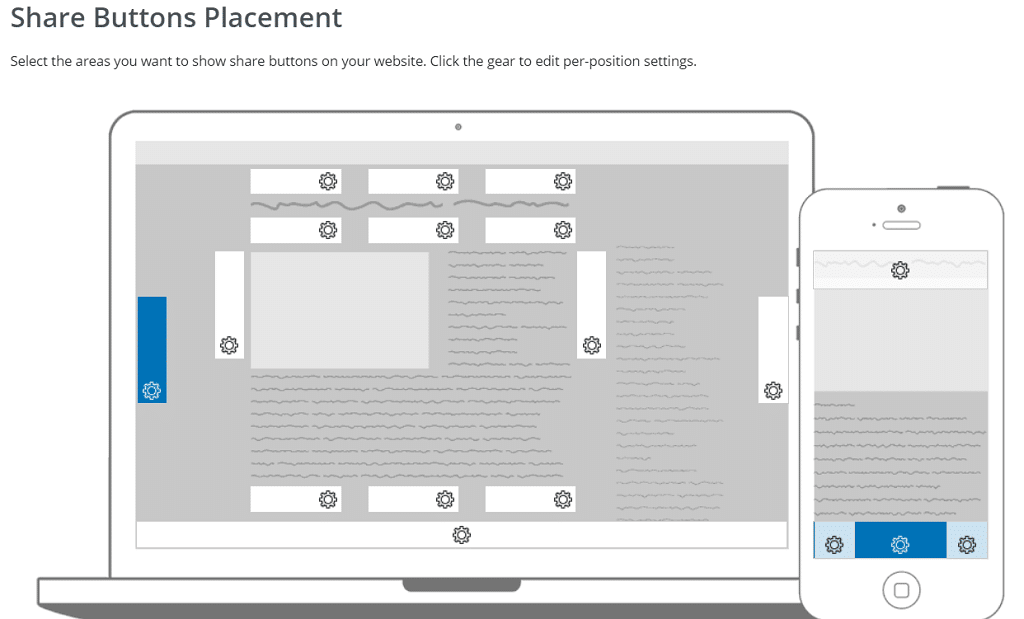
Sumo also comes with an image sharer extension that lets you add social sharing overlays on images. This is useful if you have infographics and would like to utilize them to push your brand into the social media sphere.
5. Optimize Your Website’s Performance
At this point, you now have most of the on-page elements for a website built for conversions.
You have keyword-optimized content, images for engagement, and sharing buttons for social media.
But as you incorporate more and more components into your website, you consequently increase its bandwidth requirements — thus, resulting in performance drops that could ruin the experience of your audience.
Remember, up to 40 percent of your visitors will abandon your site if it takes longer than 3 seconds to load everything. That’s why performance optimization is an absolute must-have in every brand’s web design checklist.
A tool like GTmetrix can point you in the right direction by automatically identifying issues on your site that affect its performance. All you need to do is enter your URL, wait for the analysis to complete, and assess the results to figure out if your website is running fast enough.

GTmetrix will also list down actionable recommendations that you can follow to make your website run as smooth as butter.
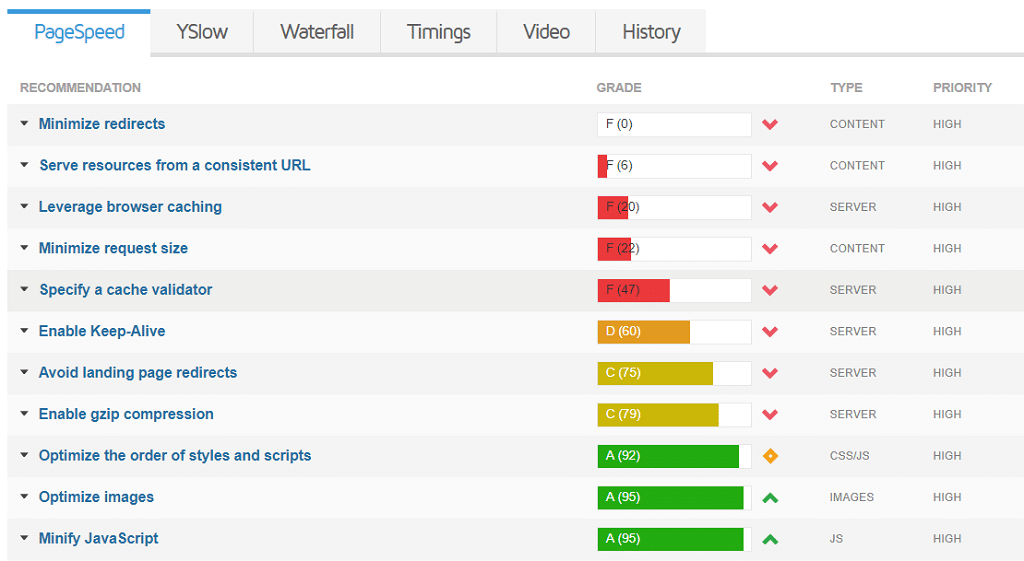
For most websites, some of the typical actions include minifying your codes, optimizing your images, enabling browser caching, and minimizing redirects.
Visual-heavy sites like online stores, photo galleries, and digital portfolios can also use a content delivery network or CDN to drastically improve their loading speed. In simple terms, a CDN leverages multiple proxy servers (I personally use Cloudflare) to store and deliver website content to users across multiple locations.
6. Improve Your Security
Aside from increasing your website’s loading speed, most CDN companies also provide protection against distributed denial of service or DDoS attacks. This is the practice of using a network of infected computers or “botnets” to flood a website’s server and deny access to actual users — hence the name.
Take note that you can never be too safe if the integrity of your brand is on the line. You need to be prepared for all the cyber threats that can compromise the security of your business and the experience of your visitors.
The worst case scenario is when a cyber-attack leads to a data leak that involves the sensitive information of your existing customers. Fortunately, such incidences are rare, especially for small businesses who are yet to build a solid online presence.
Installing a web application firewall can work by filtering malicious traffic and tracking suspicious activity on your website. It can protect you against DDoS attacks, malware infections, and brute force attacks that attempt to gain unauthorized access to your website by generating thousands of possible password combinations.
7. Build Conversion-Oriented Landing Pages
Finally, a landing page is a website’s go-to tool for securing conversions.
These are pages that are built for a very specific goal — be it to generate email subscribers, webinar attendees, paying customers, or marketing-qualified leads.
A landing page normally consists of the following conversion elements:
- Headline
The headline’s job is, apart from getting the audience’s attention, is to communicate a clear value proposition. Make sure it’s impactful, action-oriented, and concise.
- Subheadline
To give your audience more context on your value proposition, use a subheadline that describes what your target audience should expect. This could pertain to the benefits of converting, the disadvantages of missing out, or the exact process that ensues if the user decides to take the next step.
- Featured Image
It doesn’t matter if you’re trying to sell a product, win new subscribers, or convince users to download your content. There is always an image you can use to increase the engagement factor of your landing page.
- Call to Action
Lastly, the call to action or CTA is responsible for giving users one final push into committing to a conversion. A good strategy is to use frictionless, action-oriented words that make the conversion process seem easy, like “learn,” “start,” “get,” and so on.

After identifying the conversion elements you need on your landing page, see to it that they’re properly emphasized in your website’s layout. Try to remove everything that may distract users away from the page, such as ads, excessive links, popups, and embedded YouTube videos.
Here is an example of a landing page that does it right:

(Image Source: Backlinko)
Conclusion
Designing a website isn’t a walk in the park, but it’s not exactly rocket science, either.
As long as you’re equipped with the right strategies and tools, there should be no doubt on your mind that you can create a website that’s optimized for maximum conversions. And with the checklist above, you’re definitely well on your way.
What crucial web design tip would you give other readers? I would love to hear about them in the comments below. Cheers!
